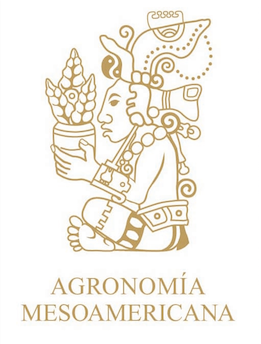Ver ítem
- xmlui.general.dspace_homeCentros Regionales y EEAsCentro Regional Chaco - FormosaEEA Sáenz PeñaArtículos científicosxmlui.ArtifactBrowser.ItemViewer.trail
- Inicio
- Centros Regionales y EEAs
- Centro Regional Chaco - Formosa
- EEA Sáenz Peña
- Artículos científicos
- Ver ítem
Frecuencia y altura de corte en Panicum maximum cv Gatton Panic = Frequency and cutting height on Panicum maximum cv Gatton Panic
Resumen
Introducción. La actividad ganadera, se desarrolla en pastoreo como principal recurso alimenticio. En el centro y norte de Argentina se están introduciendo pasturas con mayor producción de biomasa y capacidad de mantener la calidad forrajera más tiempo. Objetivo. El objetivo de este trabajo fue evaluar la producción de materia seca (kg MS.h-1), número de macollas y relación hoja:tallo (H:T) de Panicum maximum cv Gatton panic, a dos alturas, tres
[ver mas...]
Introducción. La actividad ganadera, se desarrolla en pastoreo como principal recurso alimenticio. En el centro y norte de Argentina se están introduciendo pasturas con mayor producción de biomasa y capacidad de mantener la calidad forrajera más tiempo. Objetivo. El objetivo de este trabajo fue evaluar la producción de materia seca (kg MS.h-1), número de macollas y relación hoja:tallo (H:T) de Panicum maximum cv Gatton panic, a dos alturas, tres frecuencias de corte y dos tiempos de muestreo. Materiales y métodos. El ensayo se desarrolló entre abril de 2011 y mayo de 2012. Se evaluaron dos alturas (0,15 y 0,30 m) y tres frecuencias de corte (30, 45 y 90 d), en dos periodos (90 y 180 d), para lo cual se empleó un diseño completamente al azar con un arreglo factorial de 2 x 3 x 2. Resultados. Se encontró interacción entre las variables: altura (A) x frecuencia (F). La mayor producción de materia seca (MS) se observó con la menor altura y la mayor frecuencia de corte (0,15 m y 90 d), con 1877,2 kg MS.ha-1. Para el número de macollas la interacción A x F mostró diferencia (p<0,05) para la combinación de 0,30 m y 30 d, mientras que la relación hoja:tallo (H:T) estuvo afectada por la interacción A x F. La mejor relación H:T se obtuvo con la frecuencia intermedia y la mayor altura. Conclusión. El mayor rendimiento de MS se obtuvo con la frecuencia de corte más alta, en el menor tiempo y con la altura más baja. La mayor cantidad de macollas se obtuvo con la menor frecuencia, el menor tiempo y con la altura más alta; y la mejor relación H:T se obtuvo con la frecuencia intermedia y baja, el menor tiempo y la mayor de las alturas de corte.
[Cerrar]
Introduction. Livestock activity is developed in grazing as the main food resource. In central and northern Argentina new planted pastures are being used with higher biomass production and ability to keep forage quality longer. Objective. The objective of this study was to evaluate the production of dry matter (kg MS.ha-1), number of buds, and relation leaf:stem (H:T) of Panicum maximum cv. Gatton panic in two heights, three cutting frequencies, and two
[ver mas...]
Introduction. Livestock activity is developed in grazing as the main food resource. In central and northern Argentina new planted pastures are being used with higher biomass production and ability to keep forage quality longer. Objective. The objective of this study was to evaluate the production of dry matter (kg MS.ha-1), number of buds, and relation leaf:stem (H:T) of Panicum maximum cv. Gatton panic in two heights, three cutting frequencies, and two sampling periods. Materials and methods. The study was developed between April 2011 and May 2012. Two heights (0,15 and 0,30 m) and three cut-off frequencies (30, 45 and 90 d) were evaluated in two periods (90 and 180 d), using a completely randomized design with a factorial arrangement: 2 x 3 x 2. Results. Interaction between the variables (A) x height frequency (F) was found. The highest dry matter (MS) production was observed with the lowest height and the highest cutting frequency (0.15 m and 90 d) with 1877.2 kg MS.ha-1. For the number of buds the interaction A x F showed difference (p<0.05) for the combination of 0.30 m and 30 d, while the leaf - stem ratio (H:T) was affected by the interaction A x F. The best H:T ratio was obtained with the intermediate frequency and the higher height. Conclusion. The greatest MS production was obtained with the highest cutting frequency, in the shortest time, and with the lowest height. The highest number of buds was obtained with the lowest frequency, the shortest time, and the highest height; in addition the best H:T ratio was obtained with intermediate and low frequency, the shortest time, and the highest cutting heights.
[Cerrar]

Autor
Schnellmann, Leandro Pablo;
Verdoljak, Juan Jose;
Bernardis, Aldo Ceferino;
Martínez-González, Juan Carlos;
Castillo-Rodríguez, Sonia Patricia;
Fuente
Agronomía Mesoamericana 30 (2) : 553-562 (2019)
Fecha
2019-05
Editorial
Universidad de Costa Rica
ISSN
1021-7444
2215-3608
2215-3608
Formato
pdf
Tipo de documento
artículo
Palabras Claves
Derechos de acceso
Abierto
 Excepto donde se diga explicitamente, este item se publica bajo la siguiente descripción: Creative Commons Attribution-NonCommercial-ShareAlike 2.5 Unported (CC BY-NC-SA 2.5)
Excepto donde se diga explicitamente, este item se publica bajo la siguiente descripción: Creative Commons Attribution-NonCommercial-ShareAlike 2.5 Unported (CC BY-NC-SA 2.5)


